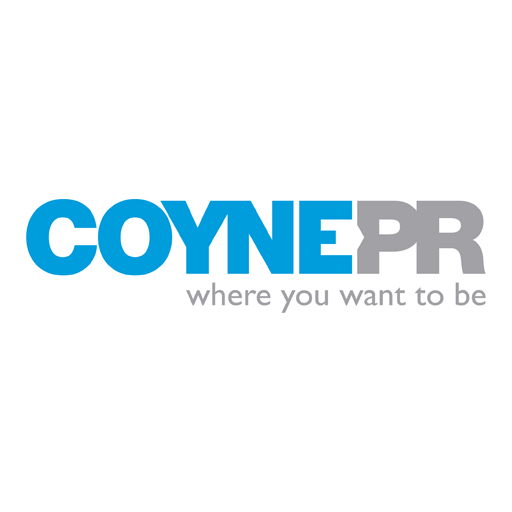Coyne PR 16 Mar 2015 // 1:57PM GMT

Sweeping changes in publishing are significantly affecting the editorial community, particularly women’s magazines and websites. With staffs shrinking, publications sharing resources and titles folding into one another, everyone is expected to do more with less. And as the print presence shifts and the online world grows, the need for more content at a faster pace increases.
With the changing landscape, agencies are more and more valuable to editors. From long lead to short lead (and the shift toward editors needing to be both), to bloggers and online editors, it has never been so vital to communicate with them in a way that supports their end goal: delivering news, informing, entertaining and providing content that will resonate with their readers.
To dive further into this topic, we interview three of the top editorial experts from both the print and online world, providing more insight into what Beauty PR experts can do to capture the attention of these gatekeepers to client’s target audience.
Special thanks to Cheryl Kramer Kaye, Executive Beauty Director, SHAPE; Holly Carter, Beauty Director, PEOPLE STYLEWATCH; and Beth Shapouri, Lead Beauty Writer for Glamour.com’s LIPSTICK, freelancer writer on beauty and lifestyle for their insight and feedback.
Media relationships
Media relations is the cornerstone of public relations as a craft. This business was built on making and maintaining connections through thoughtful and genuine relationship building. Cheryl Kramer shares, “It’s always about relationships. Nothing beats face-to-face time like having lunch with an editor.
Simple formula – keep it real.” An editor will go the extra mile for someone she has a relationship with. The way in which you communicate has to make sense for the media you are targeting. How can you build relationships in this fast, furious and largely online world? Though PR practitioners may think a phone call is more personal, oftentimes it’s hard for editors to pick up the phone and chat. With email, all of the useful information is right at the editor’s fingertips – if the email is crafted correctly. Beth Shapouri explains, “I post four times a day, so email pitches are most timely and preferred. Be clear and make it interesting, but don’t send me a PDF. If I need to populate a story with product specifics – giving it to me in a format I can use cuts down on the chance for error.” BUT, if they need things on a dime, they may call YOU. “I find that if I need something quickly, I pick up the phone,” says Kramer. It’s important to take their call and get back to them quickly. Surprisingly, all three editors said that response time back from PR people can be a problem.
Lastly, learn their social habits. Some editors react (and love) when brands tweet at them, while others would prefer you keep outreach to their work emails. Keep in mind that these are their personal social channels, so they reserve Facebook for their social interactions outside of work!
Make all lead times a priority – and make sure what you are sending is translatable to all.
Gone are the days where everything is developed for long lead and then tweaked for short lead. The emphasis needs to be on both and what makes sense for each outlet. Surprisingly, it’s not that different anymore and all editors are looking for content to share in their books, socially and online.
PR teams can send information on products as soon as they become available. Put an embargo or launch date and editors will be sensitive to this. Provide them with links or embedded product imagery. Carter expands, “We do style and shoot our own products, especially color cosmetics. But occasionally straightforward images of items like lotions, shampoos and conditioners can come in handy.” A smart and eye-catching mailer or an item that maps back to your brand in an organic way can be shared online. “Instagram is KING and brands are considering this when sending new products and creative mailers,” Shapouri explains.
Tell them something they don’t know
Curiosity fuels the fire of the beauty press. Pull out the key benefit, search for that niche ingredient and find the unexplored angle. It’s not your job to write the story for the editors, but give them something to work with. Carter shares, “We do the legwork, but we’re looking for the kernel of the idea from you and then we’ll take it in the direction that makes sense for our readers.”
Editors get their inspiration the same way you do – from the world around them, from pop culture to world news, and they are constantly looking for sources of information and nuggets of newness. You can come up with one for them and serve it on a silver platter – just make sure it’s right for their pub/site and reader. Bringing an expert to the table is a creative way to uncover what they don’t know. “Bring me the passionate founder, let me at your science geek. I will get to the news value by diving into the right questions with them,” suggest Kramer. Adds Shapouri, “Don’t be a brand ROBOT. Be free in conversation and with information. I know that they are representing a brand, but it has to come through in an organic way.”
Grab (and hold) their attention
Editors, like us, live in a world of overstimulation – too many shiny objects, emails popping up in their inbox, people stopping by their desk, etc. It’s hard to concentrate when there is so much going on around them, particularly with many publications going to open environment offices. Capture their attention by removing them from the situation – whether that be for a deskside appointment, at an event or simply over coffee – remove them from anything that would have them paying attention to anyone but you. When you’re not face-to-face, all three resources agreed: the subject line of an email can be your most valuable tool. Be clear, concise and clever.
Take this valuable intel and run with it, but I leave you with this one last thought: The best thing you can do to make your pitch successful is to know the outlet and what they cover! Knowing exactly how and where your product, brand or spokesperson may fit could make the difference between a writer hitting “delete” or “reply”!

Deborah Sierchio is Senior Vice President of Women’s Lifestyle at Coyne PR


































.jpg)














